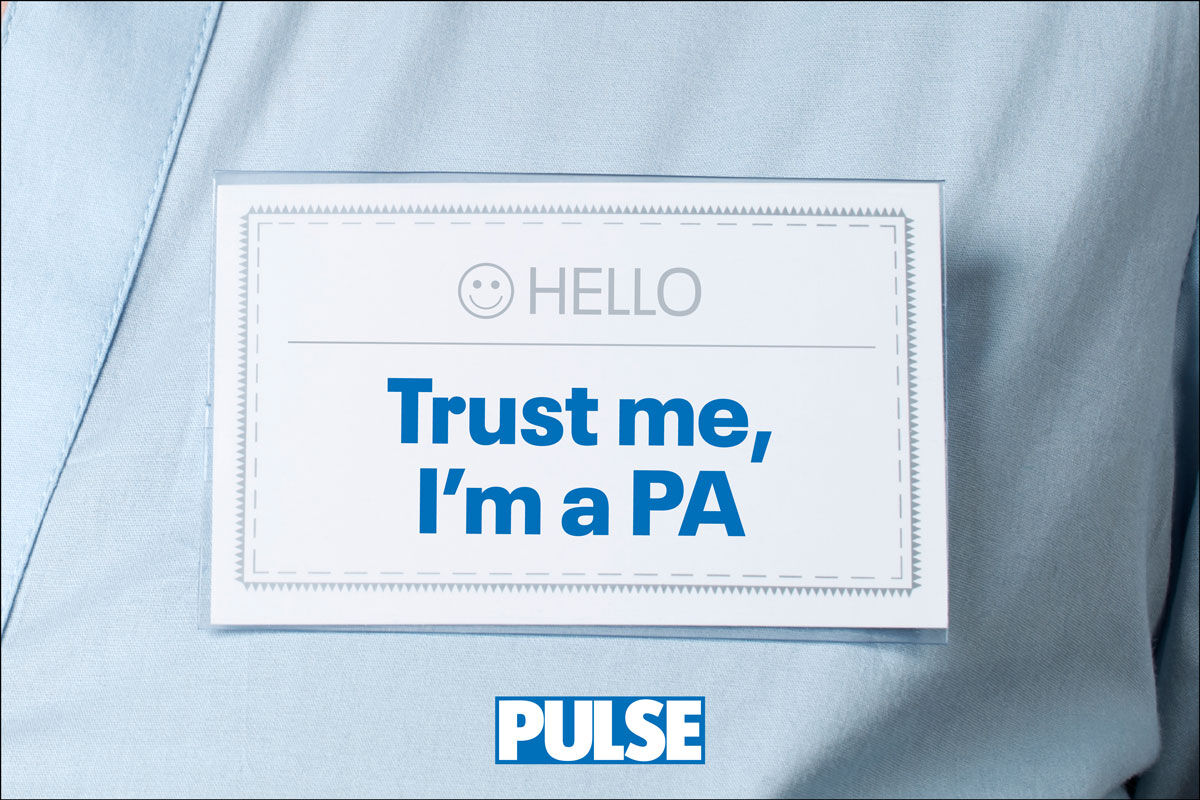GPSI in respiratory medicine Dr Andy Whittamore offers advice for improving COPD diagnosis and aftercare, including how to give patients the tools to manage their condition more proactively
As GPs we are facing a backlog in diagnoses, with some conditions faring better than others. One illness with particularly poor diagnosis times and aftercare is COPD, a problem made worse by the suspension of spirometry during the pandemic and poor patient awareness of key symptoms. This is despite lung disease now being the third biggest killer in the UK.
It is crucial that we get patients correctly diagnosed as quickly as possible, ensuring that they have the right care and support in place to enable them to start managing their condition. This will not only reduce workloads in primary care but will give patients with COPD a better quality of life for longer.
Here are my ten top tips for GPs to help diagnose COPD promptly and provide the most effective follow-up care.
1. Keep an open mind
If a patient presents with chest infections, either acutely or in a less obvious way, take a full medical history to consider underlying conditions and triggers for those symptoms. Cough, wheeze, breathlessness and increased mucus production can all come from a variety of sources, and may not be attributable to COPD, but if you are considering COPD as a possible cause of your patient’s symptoms, arrange for a spirometry test.
2. Give patients access to information and support
Upon diagnosis, a patient should be given a full explanation of what COPD is, and the treatments available to them. It is also important to discuss how someone can self-manage the condition more effectively. Asthma + Lung UK run various COPD-related support groups and has a wealth of information for people on its website, including managing flare-ups, eating well, and dealing with breathlessness. Good self-management advice would support the patient to keep as active as possible, stop smoking, have the right diet, take medication as required (with correct inhaler technique) and seek early help if there are new or worsening symptoms. Patients should also be advised to attend routine reviews, and keep up with vaccinations.
3. Direct to smoking cessation services
If your patient smokes, quitting is the single most important intervention for their lung health. Second hand smoke exposure can also be an issue, as can vaping. Very Brief Advice, a training module on how to support patients quit smoking, is a simple and effective way to engage your patient with the ultimate aim of referring patients to local smoking cessation services. More information and training available in Very Brief Advice can be found at Very Brief Advice training module (ncsct.co.uk) There is also advice available on the Asthma + Lung UK website on quitting smoking.
4. Promote the importance of pulmonary rehabilitation
We need to be better at ‘selling’ pulmonary rehabilitation to people with COPD who meet the eligibility criteria of MRC 3 or above. Uptake is poor even though most people with the condition who have been offered pulmonary rehabilitation (PR) claim that it has been an incredibly positive way of retaining fitness, controlling their breathing and supporting them to self-manage their condition. Asthma + Lung UK’s recent report revealed that less than half of all respondents diagnosed with COPD who were eligible for PR had been offered pulmonary rehabilitation.1We know waiting lists have increased since the pandemic, and that there are capacity issues at play, but some people with COPD simply don’t know about pulmonary rehabilitation.
Pulmonary rehabilitation courses include structured education, lifestyle support and personalised exercises so that people with COPD can be confident to live well with their condition. Patients who have completed a course experience less breathlessness and less fatigue. They will have greater exercise tolerance, higher quality of life and less healthcare utilisation.
This has the benefit of scoring QOF points, too. QOF indicator COPD014 rewards: ‘The percentage of patients with COPD and Medical Research Council (MRC) dyspnoea scale ≥3 at any time in the preceding 12 months, with a subsequent record of referral to a pulmonary rehabilitation programme (excluding those who have previously attended a pulmonary rehabilitation programme).’
5. Stress the importance of being active
For patients who are struggling to breathe, it can seem counter-intuitive to ask them to get out of breath by exercising. Being active helps to train the lungs and the heart so that oxygen can get to where it is needed more efficiently, as well as keeping up muscle strength, so reducing the sense of breathlessness. You could also highlight the other benefits of exercise such as lowering stress, boosting mental health, improving sleep and increasing resistance to infection and viruses. It is also worth reminding patients of the importance of a healthy diet.
NICE five fundamentals of COPD care
- Co-develop a self-management plan
- Offer pneumococcal and influenza vaccinations
- Optimise treatments for multiple conditions
- Offer pulmonary rehabilitation to eligible patients
- Provide support for smoking cessation
6. Make sure your patient’s vaccinations are up to date
It’s crucial that you explain to your patients that having a diagnosis of COPD increases the likelihood of them being severely unwell with influenza, Covid-19 and pneumonia. It is vital that they take up their annual flu vaccination, to stay up to date with their coronavirus vaccines, and have had their pneumococcal vaccine (most people only need a single dose). Support your patients who may be feeling nervous about vaccines and explain they can help to keep them well and prevent severe, life-threatening illnesses.
7. Create a self-management plan
With the exception of routine reviews, we may only see our patients with long-term conditions occasionally during the year. But if we can ensure that everyone with COPD knows what to do to keep themselves as well as possible, this will help them and relieve the burden on primary care. I direct my patients to the COPD information on Asthma + Lung UK’s COPD platform which provides a free personalised self-management plan, including an exacerbation plan, so patients know what to do if their symptoms flare up.
If your patient’s self-management plan includes a rescue pack of steroid and antibiotic medication, make sure they have clear instructions about which medication to use when, and when to seek help. Your practice should have clear policies for monitoring the use of rescue packs and assessing the patient.
You could also direct your patients to the COPD Passport which is a five-minute confidential checklist that will help patients to determine whether they are receiving the right care.
8. Review medications and inhaler technique
Make sure your patients understand what their different medicines are and how to take them. For patients who uses inhalers, it is a good idea to a check on their inhaler use and technique at every opportunity. Research shows that 9 out of 10 healthcare professionals do not feel confident in explaining this technique. It doesn’t help that there are so many different inhalers that can be used for COPD and many of them have to be taken in different ways.
Asthma + Lung UK have 21 inhaler videos on their website ranging from Autohaler to Zonda which you can use to refresh your knowledge and to show to patients or direct them to. Of course, another consideration is the environmental impact of inhalers and with incentives to prioritise lower-carbon options. However, the patient must come first so it’s important to ensure that if they change to a lower-carbon inhaler, they are able to use it effectively and that a phone call is scheduled six-eight weeks later to ensure it is still working effectively for them. Spacer devices should be encouraged with every MDI.
9. Ensure your patients book an annual review
Every patient with COPD should be given an annual review according to NICE guidance and it’s vital that we encourage our patients to attend. The QOF requirements include creating a record of the number of exacerbations and an assessment of breathlessness with an MRC score. A patient with a score of three or above should be offered a referral for pulmonary rehabilitation. The annual review is an opportunity to give our COPD patients an MOT – by discussing medication and self-management, checking their inhaler technique, and finding out whether they have new or progressive symptoms.
It is also a good chance to assess for any other co-morbidities, such as obesity, osteoporosis or heart conditions. It is important to bear in mind that people with COPD have higher rates of anxiety and depression, and that mental health can be barrier to managing a chronic condition like COPD so there may be other things we can suggest such as self-help resources, talking therapies or medication.
10. Take exacerbations and worsening symptoms seriously
Every exacerbation is a golden opportunity to check that the basics are in place – smoking cessation, activity, pulmonary rehab, vaccinations, good adherence with the right medication and good inhaler technique. Every case where there is a flare up of symptoms or if symptoms are worsening should also trigger a review of the diagnosis – could there be something else causing the symptoms – cancer, asthma, bronchiectasis, heart failure, rhinitis, gastric reflux, deconditioning, anxiety and dysfunctional breathing are only some of the common conditions that get mistaken as COPD. If your patient has rescue medication at home ensure they are using them at the right time and for the right reason. Also ensure there are safety checks in place to follow up patients who use rescue packs.
Dr Andy Whittamore is Asthma + Lung UK’s clinical lead, and a practising GP, based in Hampshire.
For more information on COPD, visit www.asthmaandlung.org.uk















Noctor will see you now. Hope they know what are the NiCE/BTS guidelines. No real scrutiny on that front anyway.